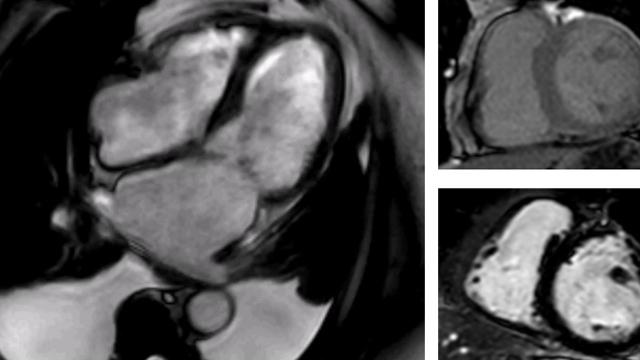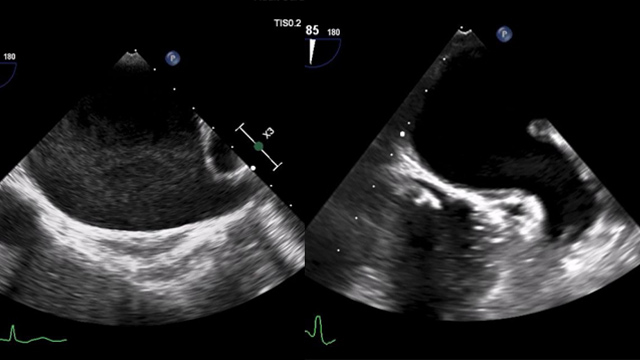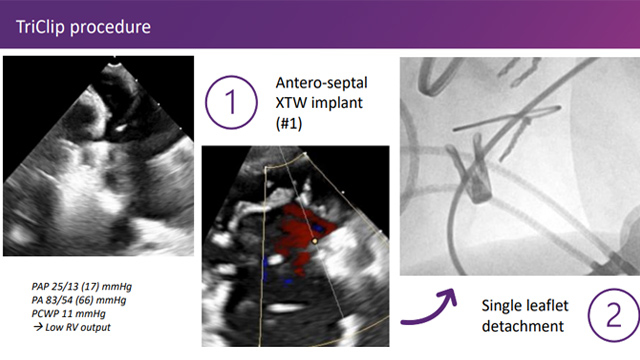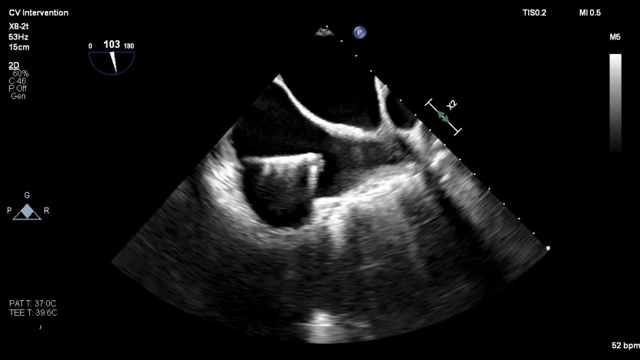479 results
Tricuspid valve intervention - Get it right!
29 Nov 2022 – From PCR London Valves 2022
Watch this session if you want to learn tips and tricks that influence procedural strategy through a real-life case as well as anatomical factors that contribute to tricuspid valve complexity and choice of treatment, followed by the latest clinical data.

Surgical and transcatheter tricuspid intervention: state of the art - LIVE case
29 Nov 2022 – From PCR London Valves 2022
In this PCR London Valves 2022 session, follow 3 stunning case treatments:
- Part 1: Triscupid TEER (Live)
A 78-year-old male with a history of CABG (2015), PM-CRT (2015) and atrial fibrillation, presents a severe TR with an LVEF of 40%, preserved RV function and moderate pulmonary hypertension.
They performed...

Treatment of multi-valve disease
29 Nov 2022 – From PCR London Valves 2022
Get a look at these presentations to learn more about the basic haemodynamic interactions between different valve lesions, the existing surgical standards (and evolving transcatheter standards) for the treatment of multi-valve disease, and to discover a selection of cases that demonstrate the importance of clear indications and appropriate timing...

Transcatheter tricuspid valve intervention is booming: where are we now? and where are we going?
29 Nov 2022 – From PCR London Valves 2022
Watch these presentations to better understand what's happening in the field of tricuspid valve intervention and to appreciate the characteristics of current and newly emerging transcatheter devices.

Rapid-fire abstracts: Session 10
29 Nov 2022 – From PCR London Valves 2022
Discover a selection of abstracts presented during PCR LV 2022: trends in utilisation of percutaneous tricuspid valve vegetation debulking in endocarditis 2017-19, association of TRI-SCORE with clinical outcomes after transcatheter tricuspid valve repair, transcatheter edge-to-edge repair vs. percutaneous annuloplasty for tricuspid regurgitation, and more!

Mitral and tricuspid patients are different from the TAVI population - Impact on clinical care
28 Nov 2022 – From PCR London Valves 2022
Consult this session to learn more about the different needs of mitral and tricuspid patients, to appreciate what optimal medical therapy really means and to improve your knowledge of the anticoagulant requirements for different patient populations.

Learning transcatheter tricuspid valve interventions: the essentials
28 Nov 2022 – From PCR London Valves 2022
Take a look at these presentations to learn more about the anatomical information required to perform transcatheter tricuspid valve procedures safely and effectively, the essentials of echocardiographic imaging for patient selection and peri-procedural guidance, as well as the most commonly used devices for tricuspid interventions.

Transcatheter primary mitral regurgitation repair and tricuspid replacement - LIVE case
28 Nov 2022 – From PCR London Valves 2022
- Part 1: Primary MR repair (recorded case)
An 89-year-old male with atrial fibrillation, severe primary MR (prolapse A1-A2) with a preserved LV function. The operators implant 1 Pascal ACE, on general anaesthesia, guided by TEE. - Part 2: Tricuspid valve in valve (Live case)
A 52-year-old female, with diabetes and...

Challenging scenarios during transcatheter tricuspid valve intervention
28 Nov 2022 – From PCR London Valves 2022
Consult these presentations to get insights into how the reduction of tricuspid valve coaptation gaps can facilitate tricuspid transcatheter edge-to-edge repair, to learn some tips and tricks for improved transoesophageal imaging during tricuspid valve interventions and to master techniques for the management of single leaflet device attachment during this...

Patient selection for tricuspid valve interventions
28 Nov 2022 – From PCR London Valves 2022
Consult this session to learn more about the anatomical assessment of candidates for transcatheter tricuspid valve interventions, to understand the importance of detailed haemodynamic assessment in patients with severe tricuspid regurgitation and to discuss the predictors of clinical outcome after these interventions.



